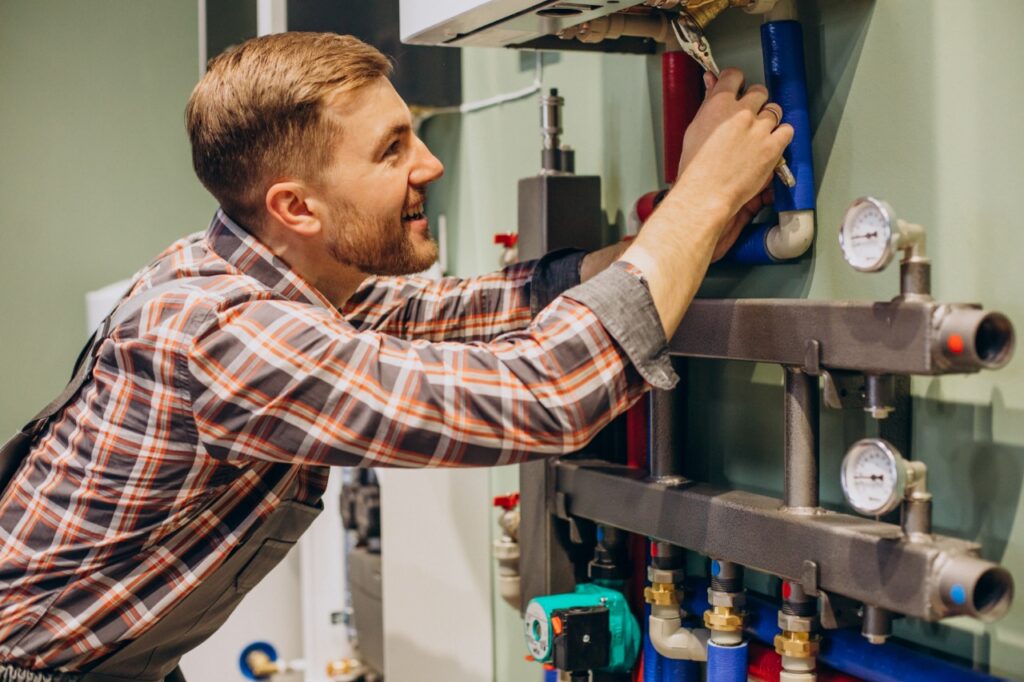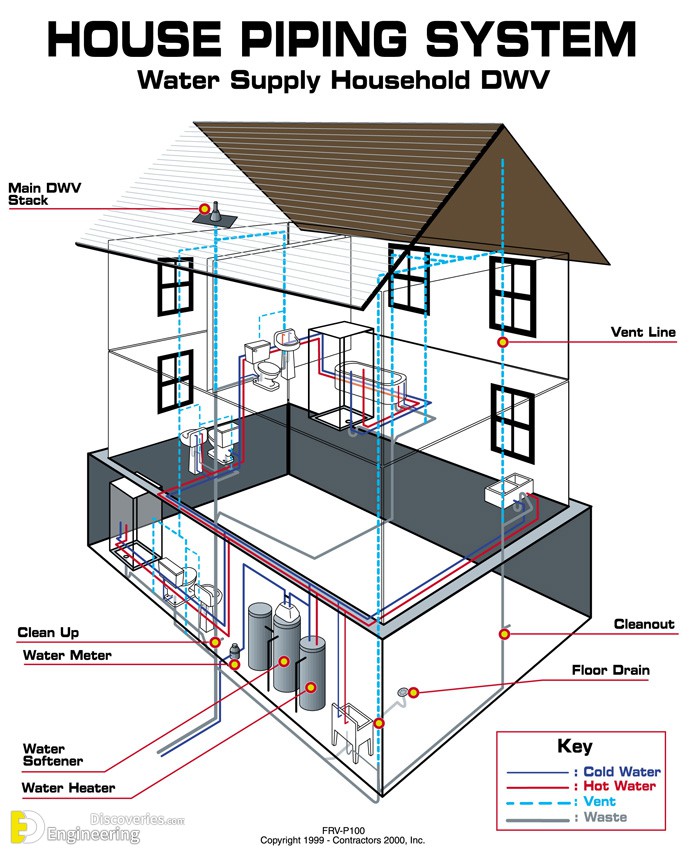The publisher is making several great pointers regarding Anatomy of a House: Understanding the Components as a whole in this great article just below.

Understanding exactly how your home's pipes system works is crucial for each home owner. From providing tidy water for alcohol consumption, cooking, and showering to safely getting rid of wastewater, a well-maintained plumbing system is essential for your family members's health and convenience. In this extensive overview, we'll explore the complex network that composes your home's plumbing and deal pointers on upkeep, upgrades, and managing usual issues.
Introduction
Your home's plumbing system is greater than just a network of pipes; it's an intricate system that guarantees you have accessibility to clean water and effective wastewater elimination. Knowing its components and just how they work together can help you stop costly repair services and make sure everything runs smoothly.
Basic Components of a Plumbing System
Pipes and Tubing
At the heart of your pipes system are the pipes and tubing that carry water throughout your home. These can be made from numerous products such as copper, PVC, or PEX, each with its benefits in regards to sturdiness and cost-effectiveness.
Components: Sinks, Toilets, Showers, and so on.
Components like sinks, commodes, showers, and bath tubs are where water is made use of in your house. Recognizing how these fixtures connect to the plumbing system assists in detecting troubles and intending upgrades.
Shutoffs and Shut-off Factors
Shutoffs regulate the circulation of water in your pipes system. Shut-off shutoffs are vital throughout emergency situations or when you require to make fixings, permitting you to separate parts of the system without interrupting water flow to the entire house.
Supply Of Water System
Main Water Line
The main water line attaches your home to the metropolitan water system or a personal well. It's where water enters your home and is distributed to different fixtures.
Water Meter and Pressure Regulatory Authority
The water meter actions your water use, while a pressure regulator guarantees that water flows at a secure stress throughout your home's plumbing system, preventing damages to pipelines and fixtures.
Cold Water vs. Warm water Lines
Comprehending the distinction in between cold water lines, which provide water directly from the major, and warm water lines, which lug heated water from the water heater, aids in fixing and planning for upgrades.
Water drainage System
Drain Pipes Pipeline and Traps
Drain pipes carry wastewater far from sinks, showers, and toilets to the sewage system or septic system. Traps protect against drain gases from entering your home and likewise trap particles that might cause blockages.
Ventilation Pipes
Ventilation pipelines allow air right into the water drainage system, protecting against suction that might slow down drainage and trigger traps to vacant. Proper air flow is important for keeping the stability of your pipes system.
Value of Proper Water Drainage
Guaranteeing correct drainage avoids back-ups and water damage. On a regular basis cleaning drains pipes and maintaining catches can prevent pricey repair work and expand the life of your plumbing system.
Water Heater
Types of Water Heaters
Hot water heater can be tankless or conventional tank-style. Tankless heating systems heat water as needed, while containers store warmed water for immediate use.
Updating Your Plumbing System
Reasons for Updating
Updating to water-efficient fixtures or replacing old pipelines can boost water high quality, lower water bills, and enhance the worth of your home.
Modern Pipes Technologies and Their Advantages
Explore modern technologies like smart leakage detectors, water-saving commodes, and energy-efficient water heaters that can conserve cash and reduce environmental influence.
Price Considerations and ROI
Calculate the in advance expenses versus lasting savings when thinking about pipes upgrades. Several upgrades pay for themselves with reduced utility expenses and less repair services.
How Water Heaters Link to the Pipes System
Understanding how hot water heater link to both the cold water supply and warm water distribution lines helps in identifying problems like inadequate warm water or leakages.
Upkeep Tips for Water Heaters
Regularly flushing your water heater to remove debris, examining the temperature level setups, and evaluating for leakages can expand its life-span and boost power effectiveness.
Typical Plumbing Concerns
Leaks and Their Reasons
Leaks can occur due to maturing pipes, loose installations, or high water stress. Attending to leaks quickly prevents water damage and mold development.
Obstructions and Clogs
Obstructions in drains pipes and commodes are often caused by flushing non-flushable things or an accumulation of grease and hair. Using drain displays and bearing in mind what decreases your drains pipes can protect against obstructions.
Indicators of Pipes Issues to Watch For
Low tide stress, slow drains pipes, foul odors, or abnormally high water bills are indicators of possible plumbing issues that ought to be dealt with promptly.
Pipes Maintenance Tips
Regular Examinations and Checks
Set up annual plumbing inspections to capture problems early. Look for indicators of leakages, rust, or mineral accumulation in taps and showerheads.
Do It Yourself Upkeep Tasks
Easy tasks like cleaning faucet aerators, looking for toilet leakages making use of dye tablets, or protecting exposed pipes in cold environments can protect against significant plumbing concerns.
When to Call a Professional Plumbing
Know when a plumbing concern calls for specialist competence. Attempting complex repair work without appropriate understanding can result in even more damage and greater repair service costs.
Tips for Decreasing Water Use
Easy behaviors like repairing leakages promptly, taking shorter showers, and running full tons of washing and recipes can save water and lower your utility expenses.
Eco-Friendly Plumbing Options
Think about lasting plumbing products like bamboo for flooring, which is durable and eco-friendly, or recycled glass for counter tops.
Emergency situation Preparedness
Steps to Take Throughout a Plumbing Emergency situation
Know where your shut-off shutoffs lie and how to switch off the water in case of a burst pipeline or major leakage.
Significance of Having Emergency Situation Calls Convenient
Keep contact details for local plumbing technicians or emergency situation services easily available for quick action throughout a pipes crisis.
Environmental Effect and Conservation
Water-Saving Components and Devices
Installing low-flow taps, showerheads, and toilets can considerably minimize water use without compromising efficiency.
Do It Yourself Emergency Situation Fixes (When Applicable).
Momentary solutions like using duct tape to patch a leaking pipe or putting a container under a leaking tap can decrease damages up until an expert plumbing gets here.
Final thought.
Recognizing the makeup of your home's pipes system equips you to keep it properly, conserving money and time on repairs. By following regular maintenance regimens and remaining notified concerning modern-day plumbing innovations, you can guarantee your pipes system runs effectively for years to come.
HOW YOUR PLUMBING SYSTEM WORKS
Which Pipes Do What?
Blue lines = fresh water supply entering the building Red lines = hot water supply entering the building Grey lines = pipes carrying waste away from the building and venting pipes carrying gases away from the building (through the roof) YOUR MAIN PLUMBING SYSTEMS
There are two main plumbing systems that support your home s basic plumbing needs one that brings clean water into your home, and one that sends dirty water away from your home. Connected to the toilet, bath, shower, and other faucets in your home, these two systems keep your water flowing in the right directions.
ACCESSING FRESH WATER
Fresh and clean water is brought into your home through the main water supply line . Filtered through one pipe, this water is pressured to flow into the various fixtures in your home at any given time.
This water can be sourced from a well located on your property, a pond or river (mostly cottages), or, as in most cases, from the city s municipal water treatment centre. However, it is important to note that water that is untreated, such as the water siphoned from ponds or rivers, may not be safe to drink. Personal water supplies always need to be treated for hardness and contaminants before consumed.
MUNICIPAL WATER SUPPLIES
Improve taste and odour Remove sediment Eliminate hardness Reduce chlorine COLD WATER SUPPLY VS. HOT WATER SUPPLY
Cold water flows into your home or building through the service line, which then distributes hot or cold water to your fixtures. This line is most commonly run through a central column that runs floor to floor. Hot water runs in short and straight pipes as the longer the pipeline, the more heat that will be lost in the transfer. Having shorter pipes also allows residents to access hot water more quickly.
WASTE WATER SYSTEM
Your wastewater system is divided into two parts pipes that send wastewater away from your home and venting pipes that send sewer gas away from your home. Sewage water travels through pipes that flush the water and waste towards local sewers that are operated and managed by your city or town. Most sewer systems rely on gravity to move the wastewater to where it needs to go.
The further away from your toilet or sink, the larger wastewater pipes become. This allows for waste to be disposed of from various parts of your home or business at once without pipe blockages. The angle and flow of these pipes are also essential for keeping your waste pipes clear of build up.
https://harrisplumbing.ca/how-your-home-plumbing-system-works/

We had been made aware of that article on Anatomy of a House: Understanding the Components through a good friend on our other web blog. Sharing is good. Who knows, you may just be helping someone out. Thanks a lot for being here. Please check up our blog back soon.
See Availability